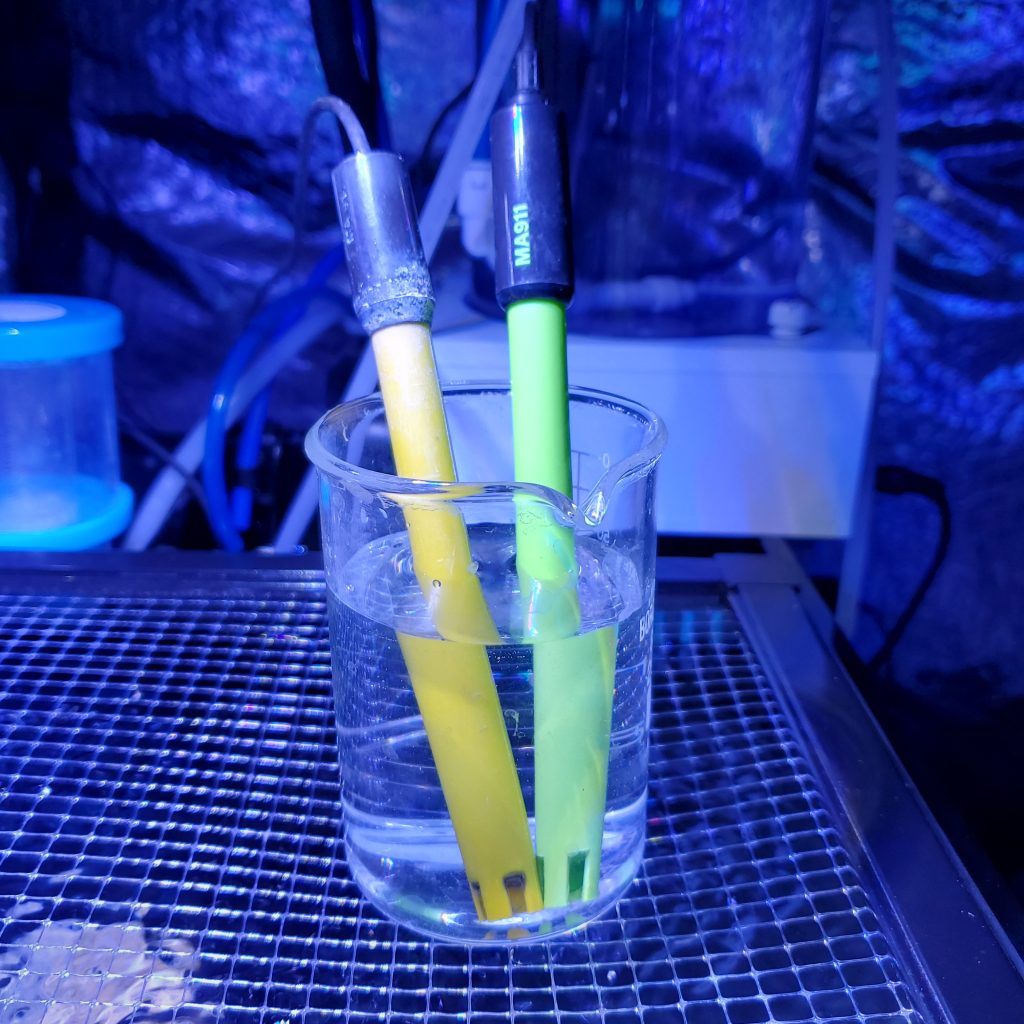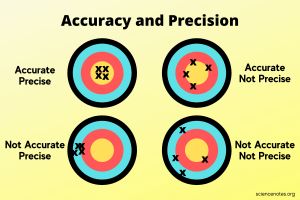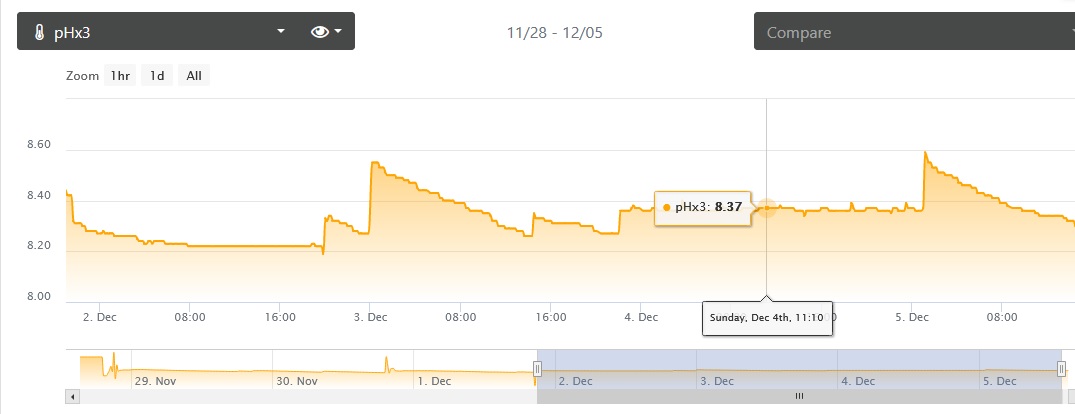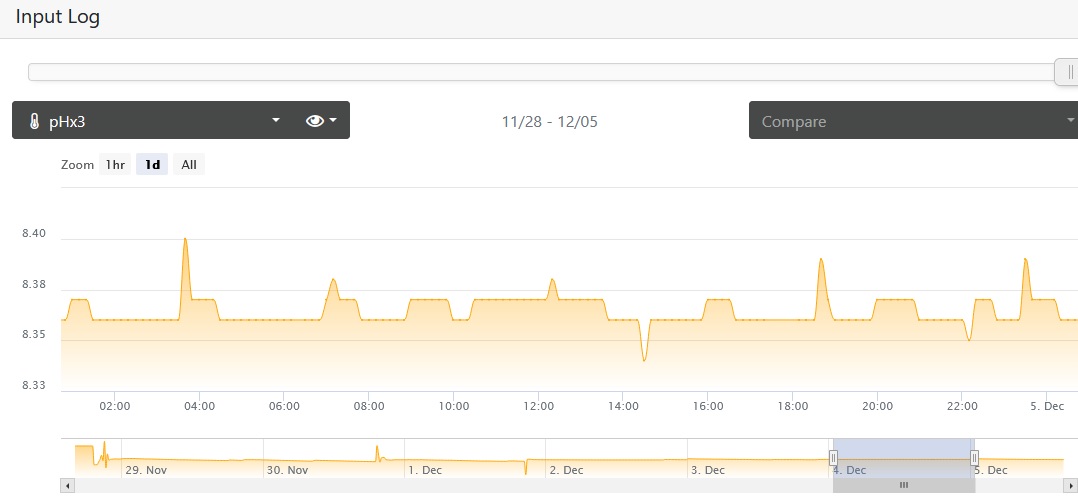
Preface: This Reef Mentoring article series is to document my recommendations to a hobbyist I have been mentoring. I am basically building a reef tank with his setup at my house and maintaining it for a year with weekly in person hands on sessions.
All measurement devices need to be calibrated or at least verified with a proper reference standard to be accurate. Even basic heater thermostats are not always accurate when delivered. When setting up your reef aquarium you should include a calibration step and plan to perform periodic calibrations as needed. This is more important if you have multiple probes measuring the same variable and used for control.
Accuracy and Precision
For any data measurement we should strive for both accuracy and precision.
Per Wikipedia: a simple definition is as follows:
“Accuracy and precision are two measures of observational error. Accuracy is how close a given set of measurements are to their true value, while precision is how close the measurements are to each other. In other words, precision is a description of random errors, a measure of statistical variability.”

Calibrate These
- Thermistors / Temperature probes with digital cooking thermometers that are usually perform within +/- 1.0 degree as a common reference
- pH probes with reference solutions 4.0 / 7.0 / 10.0 (Use 2 Point Calibration at minimum – 7.0 and 10.0 for saltwater)
- Conductivity probes with Reference Solutions 53 micro Siemens
- Refractometers with 35 PPT reference solutions
- pH Probes in 7.0 calibration solution
- pH Controller reading in Reference 7.0
- pH reading on Apex for Reference 7.0 solution
- Meat Thermometer Reference
- Ink Bird Controller Reading need small offset
- Calibrated Temperature probe on Apex
Why Calibrate?
Data collected needs to be accurate and precise. Calibrate your measurement equipment so you can trust the data collected and perform some quick analysis in order to determine how to stabilize it. You should also understand the specifications of the control devices. For example, some heaters can only control within +/- 0.5 degrees F. That plotted data would exhibit this variability. The most common goal is to flatten the curve of whatever variable you are tracking to simulate the consistency found in the ocean where the livestock originated from.
Example Application: Kalkwasser Dosing
Kalkwasser (aka calcium hydroxide) dosing is a method to equally replenish alkalinity and calcium while providing the additional benefit of raising pH. Manual dosing usually involves mixing 1 teaspoon of calcium hydroxide into a gallon of RO water to create a saturated solution. A kalkwasser reactor is a better method in my opinion. The sealed reactor mixes a larger portion of calcium hydroxide powder in a chamber that is filled with fresh RO water when dosed, and then the effluent is dosed into the system as needed. The Kalkwasser reactors must be monitored and controlled with a pH controller.
- Milwaukee MC720 Controller/ Dosing Kit
- Ice Cap KM-120 Kalkwasser Reactor
Caution: Kalkwasser dosing must have safety measures in place since it can easily wipe out a system if overdosed. As with any chemicals, never dose anything into your tank if you are not testing or monitoring for it.
A stand alone pH Controller/Doser kit was originally provided, and a reef controller was added for additional data monitoring and control. Both controllers had new pH probes installed and calibrated with the same solutions at the same time. The target pH = 8.35 but there is only +/- 0.2 pH accuracy from the stand alone pH controller. The kalkwasser reactor is programmed to stir every hour for 1 minute to keep the solution saturated. The reef controller is programmed to shut down the doser independent of the stand alone controller if the pH > 8.35 as a redundant safety control. This is why it is important to calibrate both pH probes to measure the same for any size system but especially for smaller water volumes.
Data Analysis
Below is a graph of the pH data for a few days.

Why the spikes at midnight? Understand and resolve this type of variation first. In a reef tank, consistency is everything. Having a controller gathering the data is very beneficial to show these anomalies you would have missed otherwise.
The goal is to have every day look like December 4th (see plot data below). The pH data average = ~8.35 for 24 hours with a max = 8.40 and Min = 8.34 . Make additional adjustments to minimize the range but if the livestock looks healthy it may not be worth the effort. But if there are symptoms like Rapid Tissue Necrosis/Slow Tissue Necrosis occurring on you SPS (Small Polyp Stoney corals) then Alkalinity spikes are a possible cause.

Dec 4 – 24 hour period
Simplify
I eventually removed the standalone pH controller to just use the reef controller pH probe to activate the dosing pump. This saved an outlet and also reduced complexity in the system. The reef controller had a better resolution and more flexibility to minimize the variability seen.
Long Term Goal: Isolate and create a dosing profile to reduce the spikes/valleys seen within the 24 hour period of December 4th.
Summary
It is very important to have trustworthy and accurate data to help understand your reef system. Calibrating all probes and inputs will help diagnose that. The reef aquarium is a complex environment involving multiple technical aspects of biology, chemistry, and various engineering factors. We are attempting to understand and emulate nature and the hobby has advanced quite a bit in the last two decades to allow us to quantify many variables. Even if you cannot understand and interpret this data it will be helpful when you ask for others to help. Ultimately the more you understand these aspects the more successful and responsible a hobbyist you will be.


















0 Comments